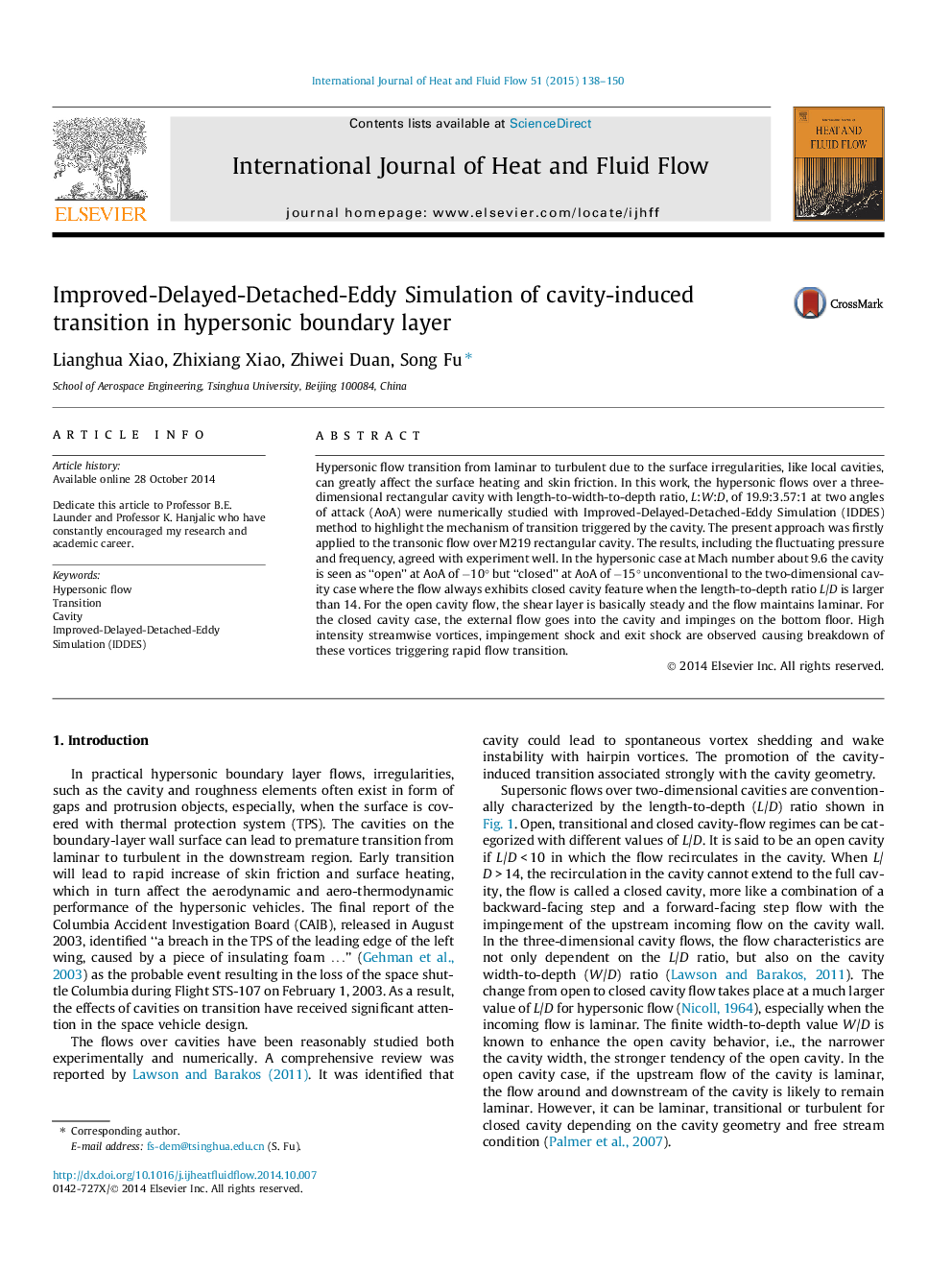| Article ID | Journal | Published Year | Pages | File Type |
|---|---|---|---|---|
| 655210 | International Journal of Heat and Fluid Flow | 2015 | 13 Pages |
Abstract
Hypersonic flow transition from laminar to turbulent due to the surface irregularities, like local cavities, can greatly affect the surface heating and skin friction. In this work, the hypersonic flows over a three-dimensional rectangular cavity with length-to-width-to-depth ratio, L:W:D, of 19.9:3.57:1 at two angles of attack (AoA) were numerically studied with Improved-Delayed-Detached-Eddy Simulation (IDDES) method to highlight the mechanism of transition triggered by the cavity. The present approach was firstly applied to the transonic flow over M219 rectangular cavity. The results, including the fluctuating pressure and frequency, agreed with experiment well. In the hypersonic case at Mach number about 9.6 the cavity is seen as “open” at AoA of â10° but “closed” at AoA of â15° unconventional to the two-dimensional cavity case where the flow always exhibits closed cavity feature when the length-to-depth ratio L/D is larger than 14. For the open cavity flow, the shear layer is basically steady and the flow maintains laminar. For the closed cavity case, the external flow goes into the cavity and impinges on the bottom floor. High intensity streamwise vortices, impingement shock and exit shock are observed causing breakdown of these vortices triggering rapid flow transition.
Keywords
Related Topics
Physical Sciences and Engineering
Chemical Engineering
Fluid Flow and Transfer Processes
Authors
Lianghua Xiao, Zhixiang Xiao, Zhiwei Duan, Song Fu,
